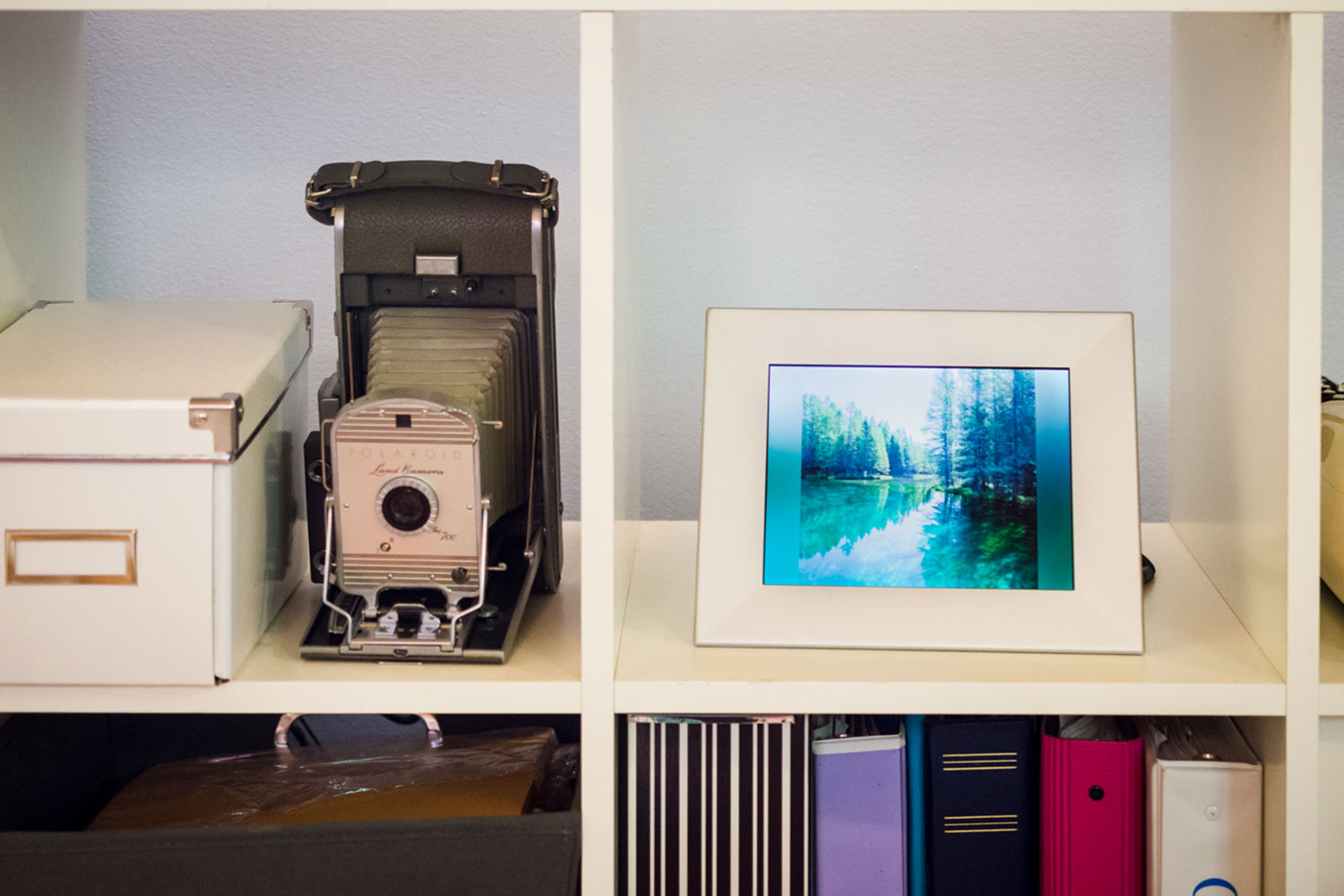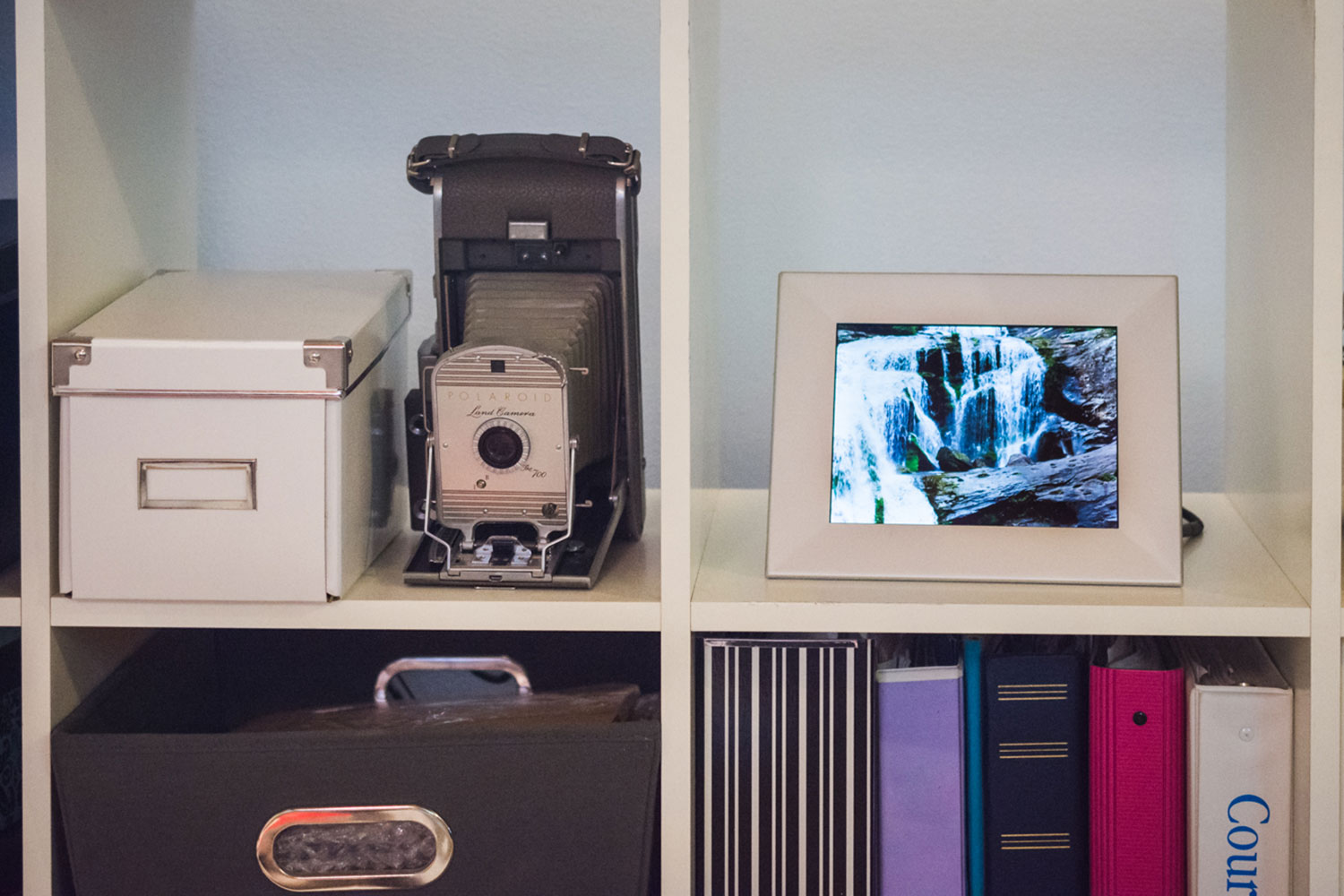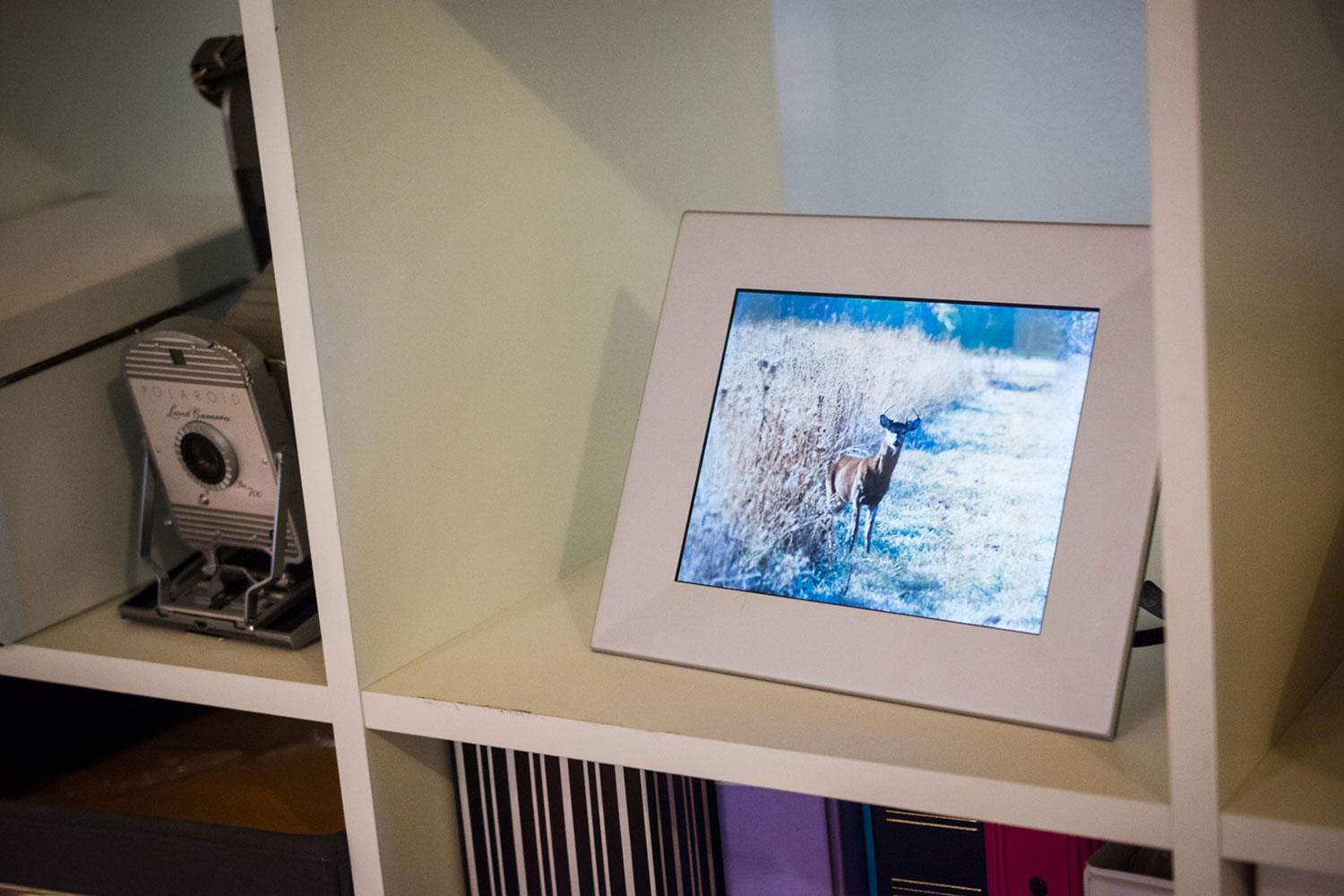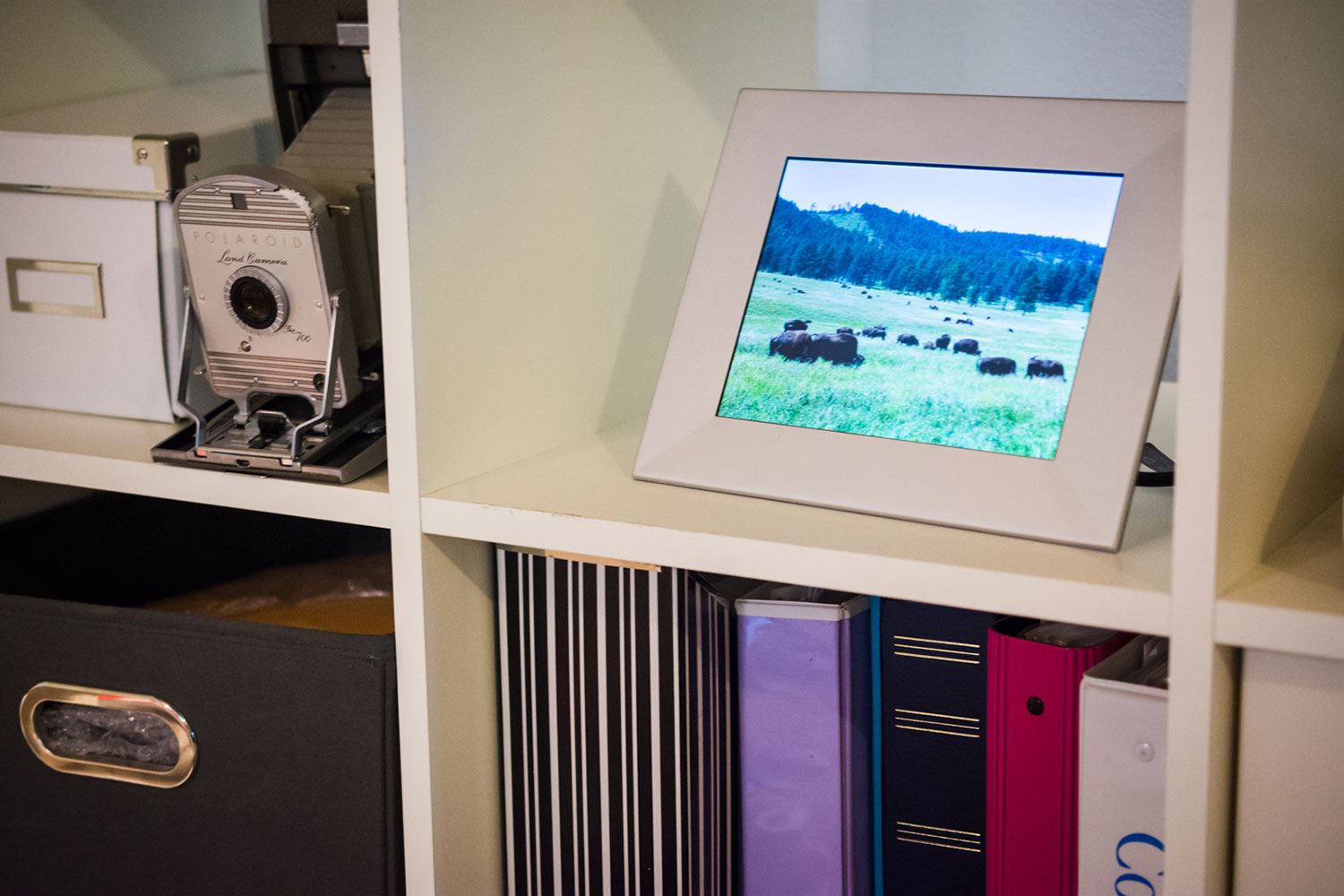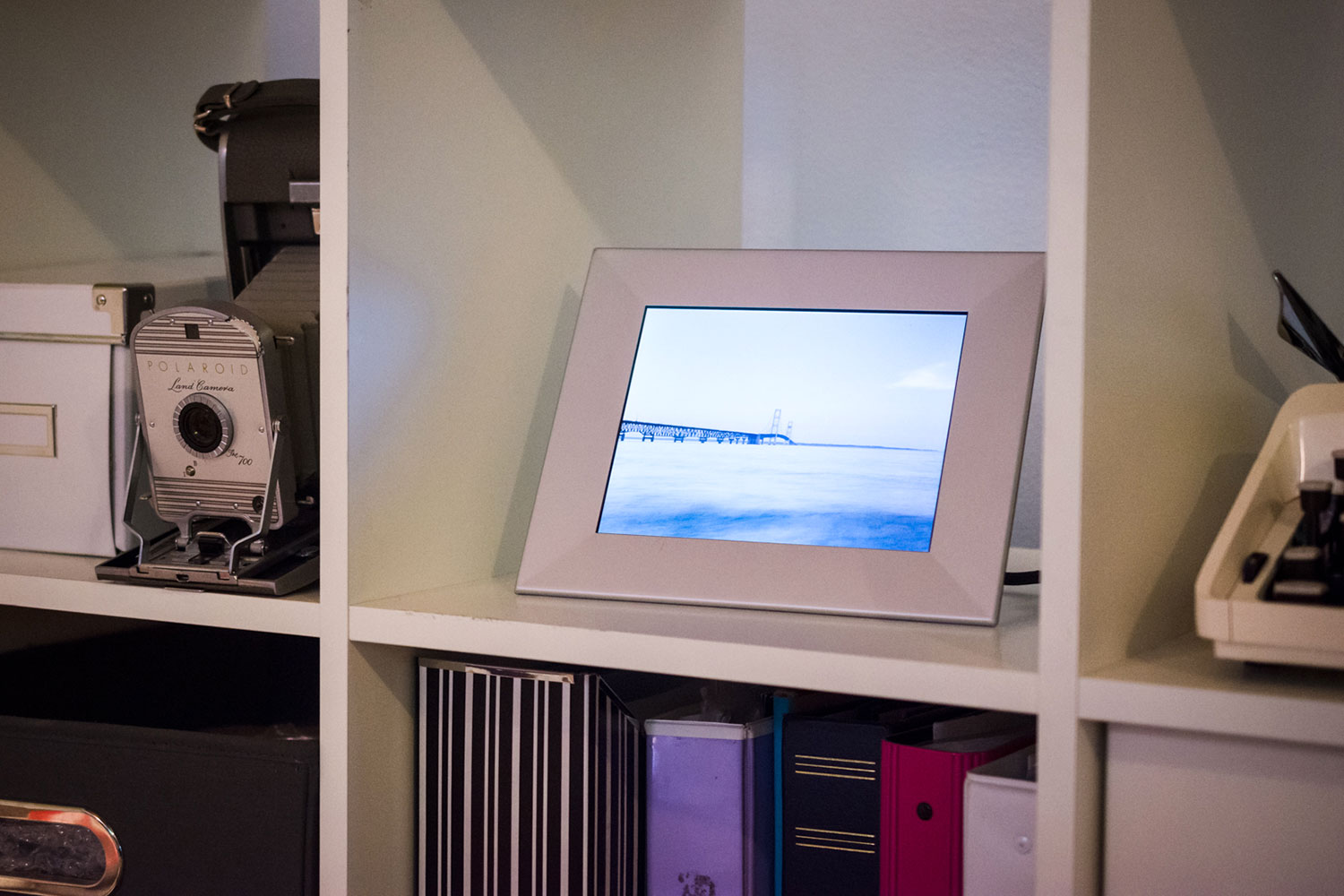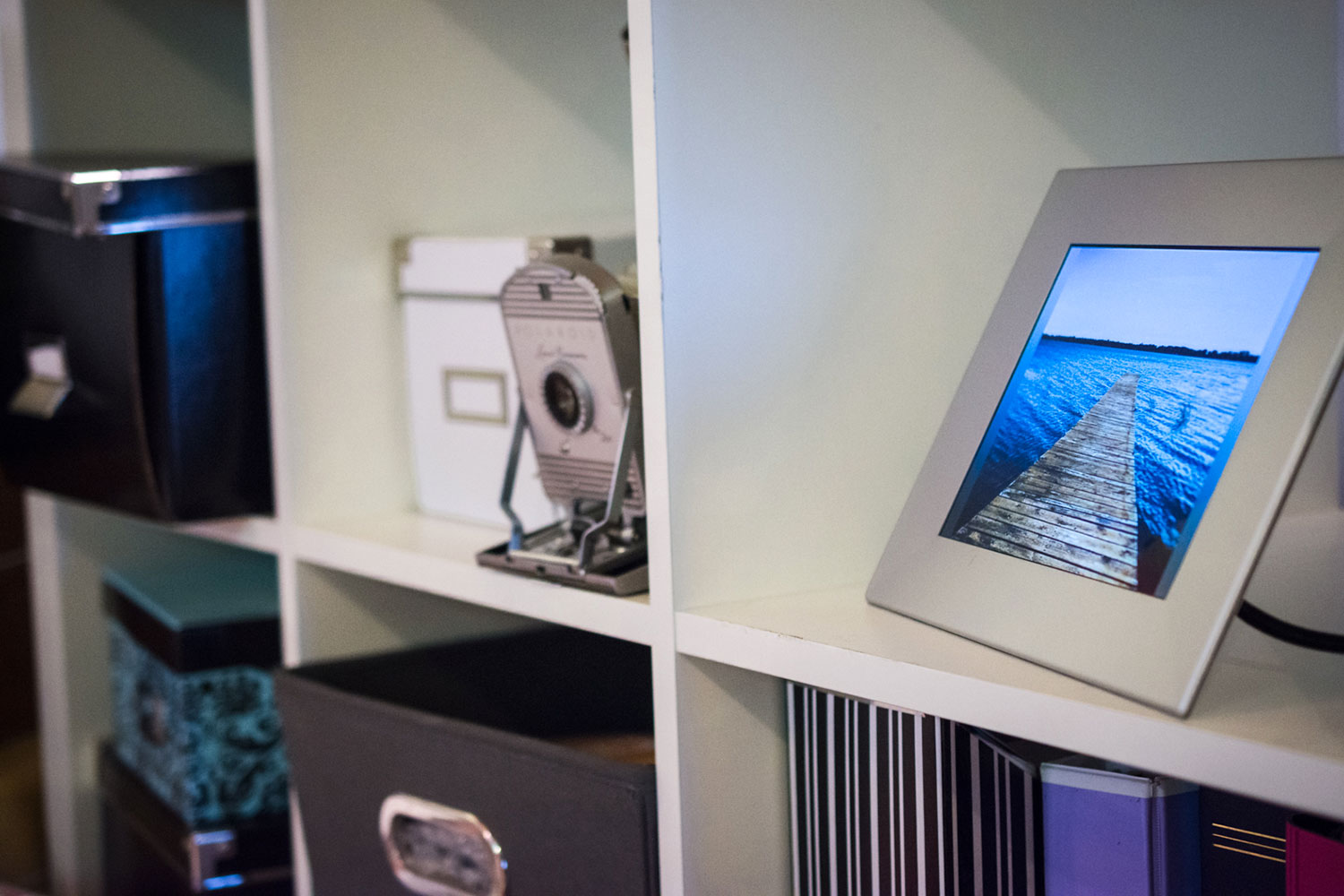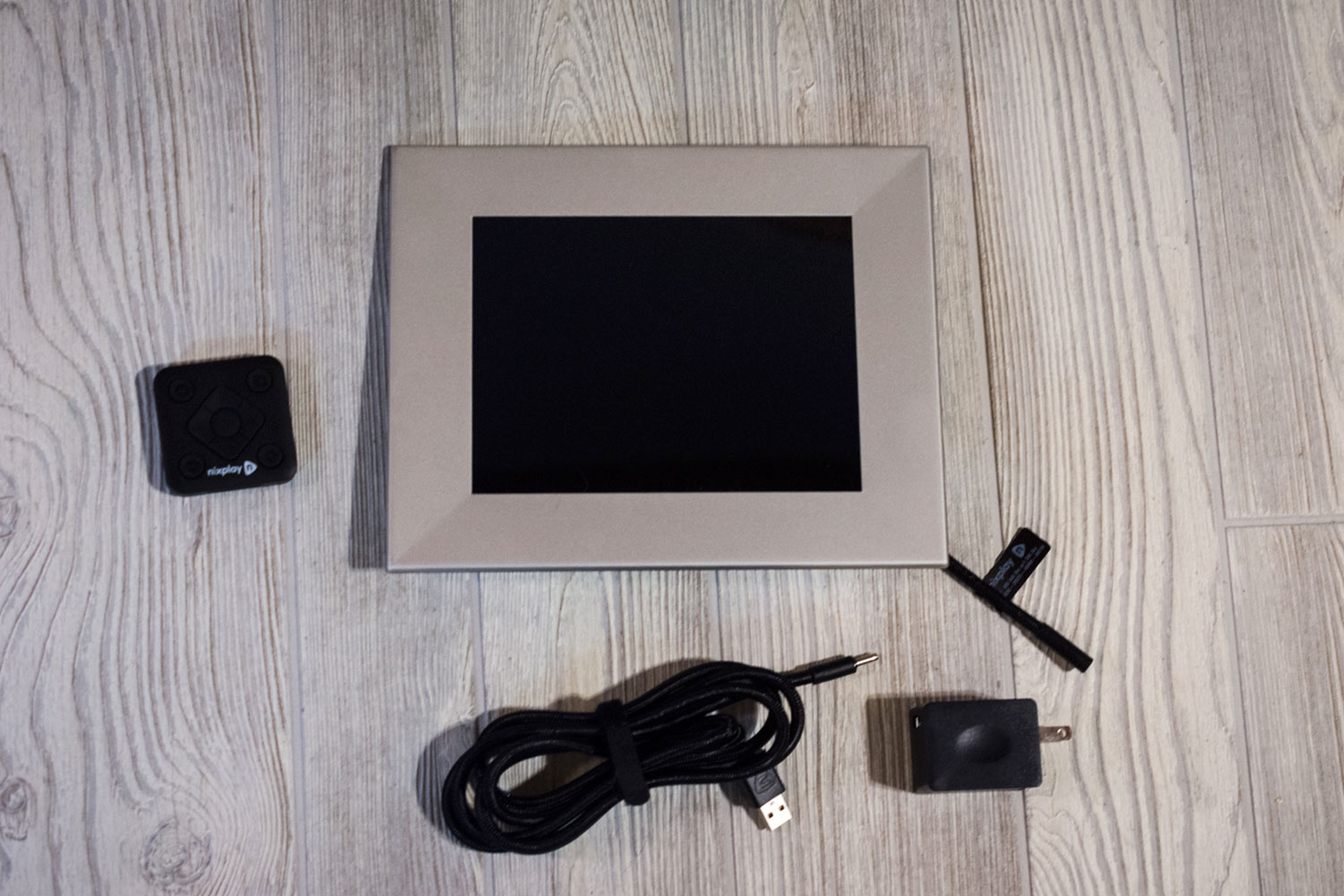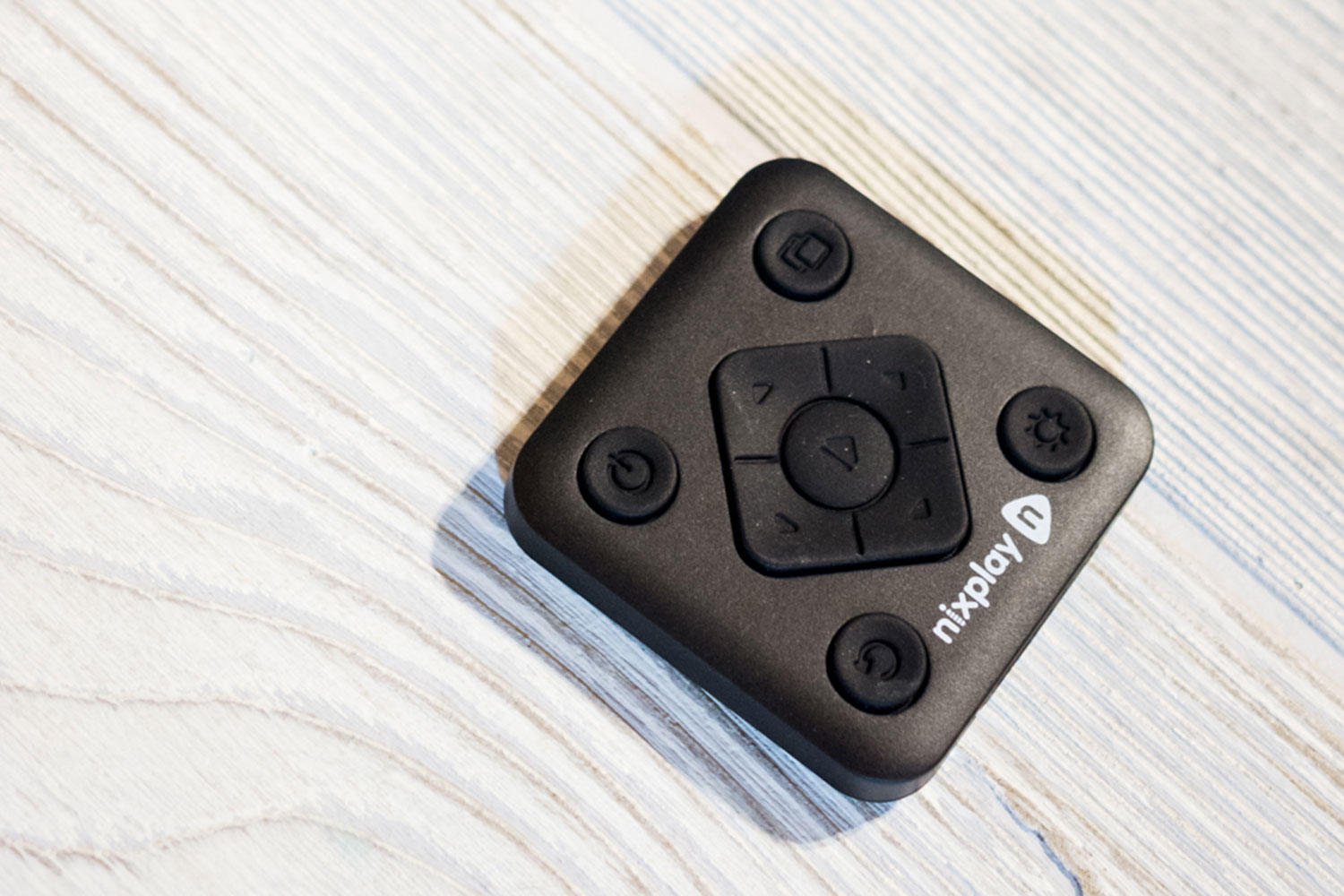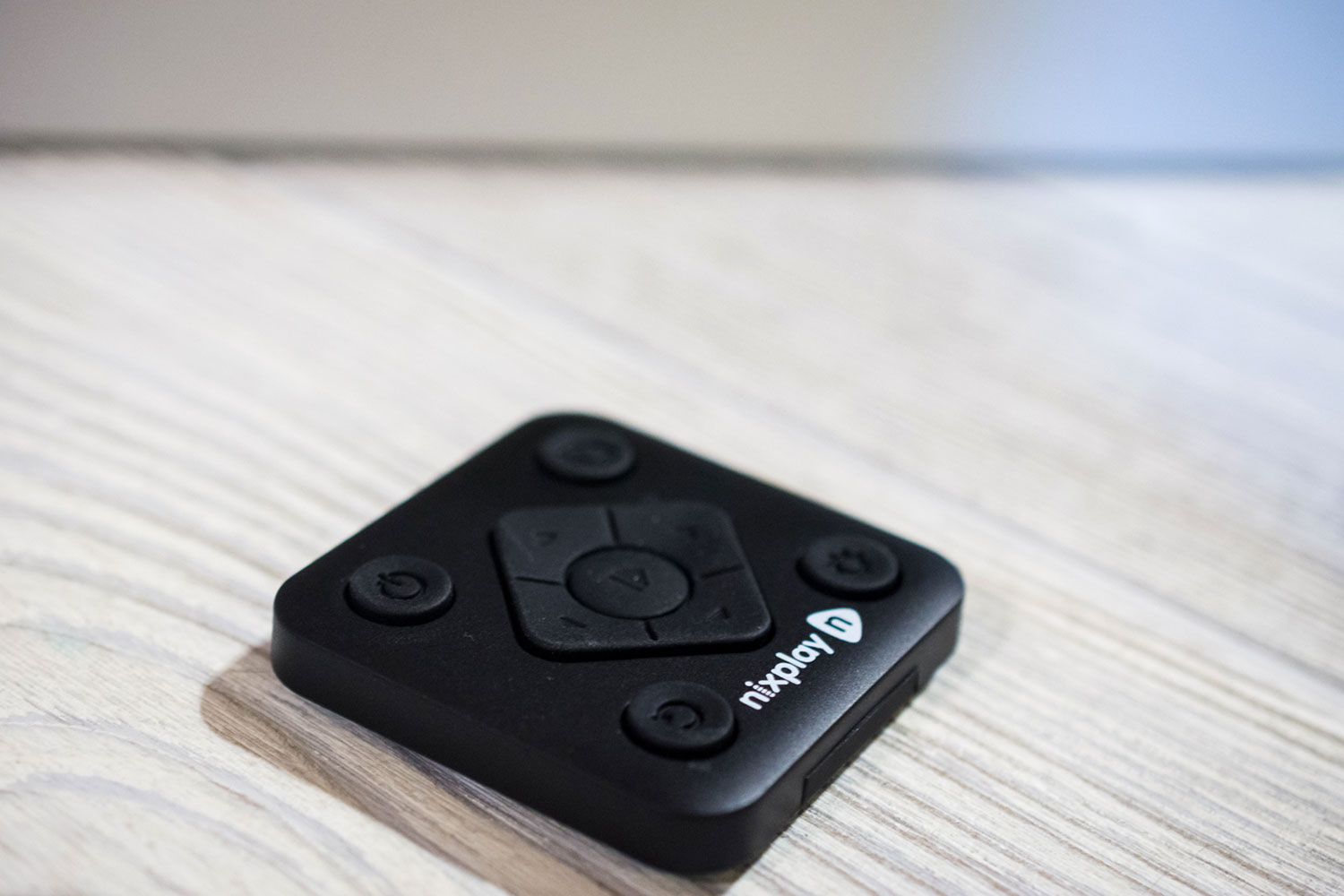A decade ago, digital picture frames topped the list of inexpensive gift ideas. While the frames appeared to be made for the digital photo age, the limited options meant they were no more than a glorified screen saver. Updating the frame meant actually pulling out the SD card and manually adding new photos. That’s to say nothing of the actual screen quality, which was mediocre at best. Enthusiasm for the category fizzled out and consumers pulled the plug on the cheap, hard-to-update models.
But what if digital picture frames weren’t so clunky and hard to update? What if they actually incorporated some of the tech built inside cameras, like Wi-Fi, and even tech that hasn’t made it into cameras yet, like Alexa voice control? The Nixplay Iris is a high-end digital picture frame that makes photos look great from any angle and wirelessly adds new photos in a few simple taps. Thanks to Nixplay, the digital picture frame may have finally caught up to 2018.
A sleek design for (almost) any decor
Unlike some of Nixplay’s other frames, the Iris is currently only available in an eight-inch size. This is similar to the display area for a 5×7 photo frame, though not exactly. Around the screen is a simple border with a slight indent at each corner, available in silver, bronze, or copper finishes.

The Iris functions in both vertical and horizontal orientations and automatically adjusts the screen to the physical orientation of the frame. The frame’s power cord cleverly doubles as the stand with a sturdy, flexible exterior to position the frame at different angles. The power cord does stick out a few inches from the outlet, so you will need a gap between the wall and the furniture to plug it in.
The images on the screen are clear from pretty much any angle and doesn’t disappear or get muddled when viewing the screen from the side. While the resolution may not seem impressive at 1024 x 768 pixels, it is actually quite good for this screen size, especially considering the longer viewing distance compared to a computer or phone screen. You do start to notice that the screen isn’t print quality up close, but it’s unlikely that you’ll be viewing it from a such a distance.
The images on the screen are clear from pretty much any angle.
When displaying a photo that doesn’t match the frame’s orientation, the Iris fills the background with a blurred version of the image (unless you select “fill to frame” in the transition settings). Up close, you can start to see some gradients in that background that aren’t quite smooth, but the details in the image are intact and the background imperfections aren’t detectable at the typical viewing distance.
Images are detailed and colors appeared fairly consistent between editing on a laptop monitor in Lightroom and the final images displayed in the frame. The frame also uses a light sensor to match the screen to the available light in the room — this helped the frame to better blend with the surroundings. The screen brightness can also be controlled manually to match it to the amount of ambient light.
Beyond photos, the frame is also compatible with videos and includes built-in speakers. Playing a video with audio on a frame that’s on all day probably isn’t something many people will want to do, but the feature is there if you need it. In our test video, however, audio didn’t start playing until a few seconds into the clip — so if you’re just looking to share your latest home movie with family, you might want to stick to your phone, tablet, or TV.
Streamlined updates
The color and quality coming from the Iris is good, but what makes the frame excellent is the technology that makes updating it much simpler than swapping out prints. With 8GB of built-in memory that’s accessible via Wi-Fi, you can send images to the frame from a smartphone app or from a desktop website in a few clicks. Besides the wireless connectivity, the frame can also be controlled through an included remote.
After opening the frame, an on-screen welcome video walks you through the steps to get started using the frame by finding the Wi-Fi connection and creating a Nixplay account. In short, if you can sign up for Facebook and connect a new device to your Wi-Fi network, you can get your frame up and running quickly. The app needs to pair with the frame, but the review model automatically typed in the frame’s serial number, so even the app setup was simple.
The Iris is compatible with Instagram and Facebook, as well as Google Photos and Dropbox. That integration makes filling a new frame with photos easy to do. Inside a web browser, you give Nixplay permission to access your social photos, then drag and drop photos to a new playlist. (The feature is for your own photos, not photos that your friends have shared). With the Wi-Fi connection, the frame will automatically download those photos and start displaying your social picks. The downside? Social network access is available only through the website and is not currently part of the Nixplay app.
Nixplay has full integration between the frame and Google Photos. That means you can sync the frame to a Google Photos album and the frame will automatically update with any new images added to the album. The update also makes it possible to sync the app’s AI-powered albums that automatically collect related photos into an album. The feature is limited to 1,000 images.
Inside the Nixplay app, you can send photos from your smartphone’s camera roll to an album to display on the frame in a few taps — you select one or multiple photos, click add then choose a playlist to add them to.
The Iris is compatible with Instagram and Facebook, as well as Google Photos and Dropbox.
Nixplay friend lists allow other people to send photos to your frame. This can be done by emailing a photo to the frame’s unique email address, or through the Nixplay app. When you add a friend, you can choose which playlist that person is allowed to send photos to, or to not send the images immediately to the frame. The feature is ideal for gifting a frame to a long distance relative, making it easy to send photos to the frame to keep in touch. If the recipient can create a Facebook account and send an email without help, then they can probably set up the frame themselves.
Nixplay playlists are kind of like a music playlist — the frame will display the photos in the order you select, unless you have the shuffle option on. You can rearrange the photos in a playlist, but only via web browser and not inside the app. Playlists can include up to 1,000 photos and you can choose to display multiple playlists at once or turn them on and off.

Besides choosing which photos to display, the Iris has several different display options, including choosing the type of transition between photos, how long to leave each image up, and whether to zoom in on photos that don’t match the orientation of the frame. The settings are accessible both through the remote and from the Nixplay app.
The Nixplay remote uses four navigation arrows; left-right to switch the photos and up-down to browse through the transition effects and navigate the menu. Extra buttons turn the frame on and off, adjust the brightness and access the menu or go back to the photos. If you happen to lose the remote, the first tab of the frame settings doubles as another remote with a similar control scheme and also displays how much space you’ve used up.
New to the Iris, the Nixplay also has a built-in activity sensor that measures the noise in the room — when it detects no noise, the frame can be set to automatically turn off or to display a clock instead. The sensor can be adjusted to go to sleep after anywhere from 5 minutes to 4 hours of quiet. Along with the activity sensor, you can also turn on a sleep timer so the frame isn’t using power at 2 a.m. while everyone is sleeping. The activity sensor has different adjustment levels, so you can keep the hum of the refrigerator or other background noises from interfering with the feature.
Final word
The Nixplay Iris’ $200 price tag means it won’t be the easy gift idea that older digital frames were. But it does bring 2018 convenience to the previously outdated product category, with options that actually make it useful. Images can be added wirelessly, while settings are easily controlled with an app (or even Alexa). Build and image quality are both good, while features like an activity sensor and light sensor help keep the frame from sucking unnecessary energy.
At the end of the day, digital frames still can’t replace print, but the Iris’s image quality is quite good from typical viewing distances. The connivence of being able to easily display new content and the option to update images remotely, however, give the Iris an edge that allows it to complement traditional printed images. For photographers, the Iris is an option for displaying the latest shots or second stringers along with the traditional larger wall prints. For grandparents and other extended family members, the Iris is an easy way to stay up-to-date with wireless family photo sharing.
Updated on Aug. 14 with Nixplay’s enhanced Google Photos support.
